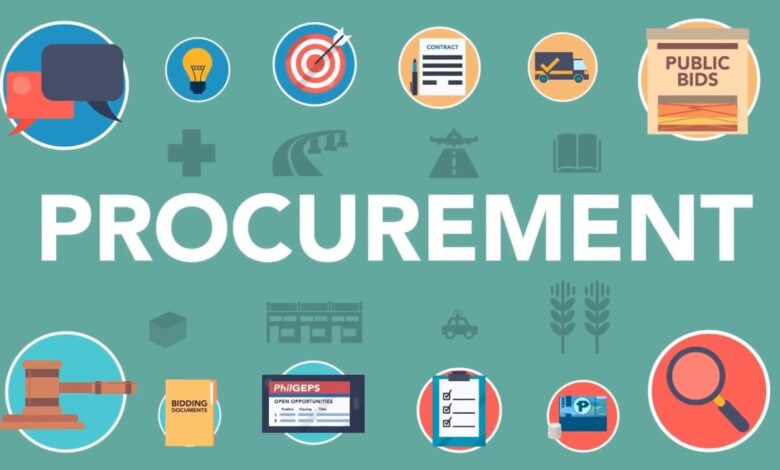The Benefits of Green Procurement for Businesses and Governments

Green procurement, also known as sustainable procurement, is the process of purchasing goods and services that have a minimal impact on the environment, while also promoting social and economic sustainability. This article explores the benefits of green procurement for both businesses and governments.
Introduction
The negative impact of human activities on the environment has become a major concern in recent years. Organizations are recognizing the need to reduce their environmental footprint and operate in a sustainable manner. Green procurement is one way in which businesses and governments can reduce their impact on the environment while also promoting social and economic sustainability. This article explores the benefits of green procurement for both businesses and governments, the barriers to its adoption, strategies for implementation, and case studies of successful green procurement.
Definition of Green Procurement
Green procurement refers to the process of purchasing goods and services that have a minimal impact on the environment, while also promoting social and economic sustainability. The aim of green procurement is to reduce the negative impact of human activities on the environment and to promote sustainable development. Green procurement involves considering environmental and social factors alongside traditional procurement criteria, such as price, quality, and delivery time.
Environmental Benefits of Green Procurement
Green procurement can have significant environmental benefits. By purchasing environmentally friendly products and services, businesses and governments can reduce their environmental footprint. For example, purchasing energy-efficient products can reduce energy consumption and greenhouse gas emissions. Choosing products made from recycled materials can reduce the amount of waste going to landfills. Green procurement can also promote the use of renewable energy sources and reduce the use of hazardous chemicals.
Economic Benefits of Green Procurement
Green procurement can also have economic benefits. By purchasing environmentally friendly products and services, businesses and governments can reduce their operating costs. For example, energy-efficient products can reduce energy bills. Choosing products made from recycled materials can reduce the need to purchase new materials, thereby reducing costs. Green procurement can also promote the use of local suppliers, which can create jobs and boost the local economy.
Social Benefits of Green Procurement
Green procurement can also have social benefits. By purchasing products and services that are socially responsible, businesses and governments can support fair labor practices, human rights, and the well-being of local communities. For example, purchasing products that are certified as fair trade or organic can support the livelihoods of farmers and promote sustainable agriculture. Choosing suppliers that operate in an ethical and socially responsible manner can also enhance the reputation of businesses and governments.
Barriers to Green Procurement
Despite the benefits of green procurement, there are several barriers to its adoption. One of the main barriers is the perception that environmentally friendly products and services are more expensive than traditional products and services. Another barrier is the lack of availability of environmentally friendly products and services. Additionally, there may be a lack of awareness or understanding of the benefits of green procurement among procurement professionals.
Strategies for Implementing Green Procurement
To overcome the barriers to green procurement, organizations can implement a range of strategies. One strategy is to raise awareness of the benefits of green procurement among procurement professionals and decision-makers. Another strategy is to set environmental criteria for purchasing decisions and to include these criteria in procurement policies and procedures. Organizations can also work with suppliers to encourage them to offer environmentally friendly products and services. Finally, organizations can track and report on their progress toward green procurement goals to demonstrate their commitment to sustainability.
Case Studies of Successful Green Procurement
There are many examples of businesses and governments that have successfully implemented green procurement strategies. One example is the city of San Francisco, which has implemented a policy of zero waste by 2020. The city has achieved a 77% diversion rate from landfills by implementing green procurement policies, such as purchasing compostable and biodegradable products, and providing recycling and composting services.
Another example is Procter & Gamble, which has implemented a sustainability program that includes green procurement. The company has set a goal to source 100% of its virgin wood fiber from sustainable sources and to send zero manufacturing waste to landfills. To achieve these goals, Procter & Gamble has implemented a supplier sustainability program, which encourages suppliers to adopt sustainable practices.
The Future of Green Procurement
The future of green procurement looks promising, as more businesses and governments recognize the need to operate in a sustainable manner. The global market for green procurement is expected to grow significantly in the coming years, driven by increasing demand for environmentally friendly products and services. The adoption of green procurement is also expected to be driven by regulations and policies that require businesses and governments to reduce their environmental footprint.



